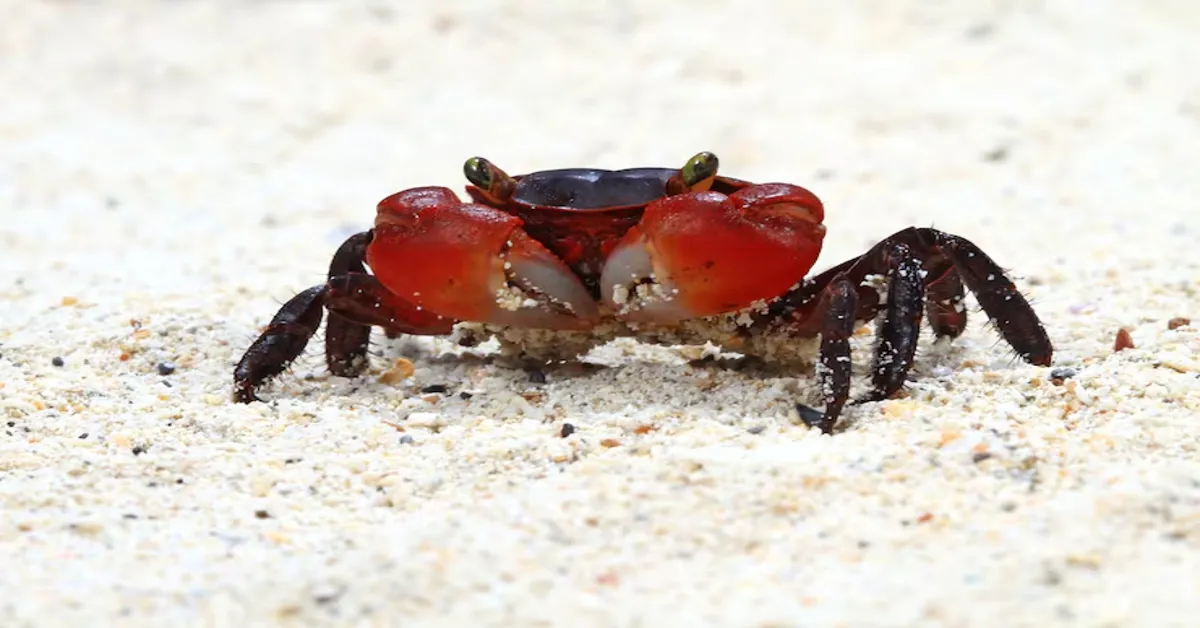When marine biologists or curious divers speak about unusual crustaceans, the Dalmatian crab rarely tops the list. Yet, this small but visually striking species, characterized by its mottled black-and-white carapace, has emerged as a curious subject in the study of marine biodiversity. Within the first glance, the Dalmatian crab captures attention with its unique appearance, but a deeper dive into its ecology and behavior reveals a complex organism that plays a surprisingly influential role in its habitat. This article serves as an in-depth look at this often-overlooked crab, shedding light on its biology, ecological significance, and the conservation issues it now faces.
1. Introduction to the Dalmatian Crab
The Dalmatian crab (not a universally recognized species in traditional marine taxonomy) is often named for its spotted appearance, reminiscent of the Dalmatian dog. Though its common name varies across regions, what binds the records of this crab together is a shared set of physical and ecological traits observed in select temperate and tropical waters. Marine experts sometimes use the term informally to describe a subset of cryptic or speckled crabs found in coral reefs or rocky shorelines. Recent interest has surged in categorizing and understanding these crustaceans better due to their growing visibility in marine surveys.
2. Physical Characteristics and Identification
The Dalmatian crab is typically small, ranging between 3 to 6 centimeters across its carapace. Its most distinguishing feature is its dappled pattern—black or dark blue spots scattered across a white or beige shell. This camouflage provides excellent protection against predators in reef and rocky environments.
The crab’s claws are generally symmetrical and used primarily for feeding and defense. Legs are banded, often displaying contrasting colors to enhance its disruptive coloration—a biological mechanism to evade detection. Its eyes are perched on stalks that offer a broad visual range, crucial for detecting predators and prey alike.
3. Habitat and Geographic Distribution
Dalmatian crabs are typically found in intertidal to subtidal zones, favoring coral reefs, tide pools, and rocky outcrops. They are known to inhabit shallow coastal waters, though they’ve been recorded at depths of up to 40 meters in some studies.
Geographically, reports of crabs matching the Dalmatian description have surfaced from the Indo-Pacific region, the western Atlantic, and occasionally parts of the Mediterranean. Their cryptic nature means they are often underreported, and their actual distribution may be far wider than currently documented.
4. Feeding Habits and Diet
Dalmatian crabs are opportunistic feeders. Their diet consists largely of detritus, algae, small mollusks, and plankton. They use their claws to scavenge, scraping organic material from rocks and coral surfaces.
Interestingly, they also exhibit cleaning behaviors similar to cleaner shrimps, removing parasites and dead tissue from fish that hover nearby. This symbiotic role suggests that their ecological contribution is more significant than previously thought.
5. Behavioral Ecology
Behaviorally, Dalmatian crabs are shy and predominantly nocturnal. During daylight, they seek refuge in crevices, under coral ledges, or within discarded shells. They emerge at night to forage, relying on both visual cues and chemical signals to locate food.
They exhibit territorial behaviors, especially during mating seasons or in areas of limited shelter. Interactions between individuals often include displays involving claw waving and posturing rather than physical combat.
6. Reproduction and Lifecycle
Mating in Dalmatian crabs typically occurs after the female molts, as her new exoskeleton is still soft, facilitating copulation. Males detect receptive females through pheromones released in the water column. Courtship includes gentle tapping and coordinated movements.
Females carry fertilized eggs in a brood pouch beneath their abdomen, protecting them until hatching. The larval stages are planktonic, progressing through multiple molts before settling to the substrate as juvenile crabs. The full lifecycle from egg to mature crab spans several months, influenced by water temperature and food availability.
7. Ecological Role and Importance
Despite their size, Dalmatian crabs serve several crucial ecological functions. As scavengers, they help recycle organic material, contributing to nutrient cycling within their habitats. Their cleaning behavior also aids in maintaining the health of reef fish populations.
Additionally, by serving as prey to various fish, octopuses, and seabirds, they are an essential component of the marine food web. Their presence can indicate the health of reef and intertidal ecosystems, making them valuable bioindicators.
8. Human Interactions and Misconceptions
Humans rarely interact directly with Dalmatian crabs. They are not commercially fished and generally pose no threat. However, they are occasionally collected for aquariums due to their unique appearance.
A common misconception is that all spotted crabs are poisonous or aggressive. The Dalmatian crab is neither. It avoids confrontation and uses its camouflage as a primary defense. Misidentification with other, more dangerous species may fuel unwarranted fears.
9. Conservation Concerns and Environmental Threats
While not currently classified under any endangered species list, Dalmatian crabs face several indirect threats. Habitat degradation due to coral bleaching, pollution, and coastal development significantly reduces their living spaces. Ocean acidification also impacts the structural integrity of their exoskeletons, affecting survival and reproduction.
Overcollection for the aquarium trade, although limited, is another concern. Because of their low reproductive rate and specific habitat needs, localized population declines could go unnoticed until it is too late to intervene.
Climate change further compounds these threats, altering current patterns and water temperatures, which can displace populations or reduce larval survivability.
10. Future Directions in Research
There is an urgent need for more focused research on the Dalmatian crab. Formal taxonomy remains ambiguous, with ongoing debates about whether it represents a distinct species or a color morph of a known crab type. Genetic analysis and long-term ecological studies could clarify these uncertainties.
Citizen science programs and increased awareness among divers and snorkelers may help map their actual distribution more accurately. Moreover, understanding their role in reef ecology could shape better conservation strategies for entire marine ecosystems.
11. Conclusion
The Dalmatian crab, though elusive and often overshadowed by more charismatic marine species, represents a compelling example of the hidden complexity within our oceans. Its spotted appearance is more than just an aesthetic trait—it symbolizes the delicate balance of camouflage, survival, and ecological interaction.
As we learn more about these creatures, it becomes increasingly clear that even the smallest members of marine communities hold vast importance. The Dalmatian crab reminds us that biodiversity isn’t just about big predators or colorful corals—it’s also about the quiet contributors, the cleaners, recyclers, and silent sentinels of the sea.
Understanding and protecting them is not only an act of conservation but one of deeper connection with our planet’s most enigmatic environments.
FAQs
1. What is a Dalmatian crab, and why is it called that?
The Dalmatian crab is a small, spotted marine crab named for its resemblance to the Dalmatian dog. Its carapace is typically covered in dark spots against a lighter background, serving as camouflage. While not officially recognized as a distinct species, the term often describes certain speckled crabs found in reef and rocky environments.
2. Where can Dalmatian crabs be found?
Dalmatian crabs inhabit shallow coastal waters, including coral reefs, rocky shorelines, and tide pools. They are primarily observed in the Indo-Pacific, parts of the western Atlantic, and the Mediterranean. Their elusive, camouflaged nature means they are often underreported in surveys.
3. Are Dalmatian crabs dangerous to humans?
No, Dalmatian crabs are not dangerous. They are not venomous, aggressive, or harmful to humans in any known way. Due to their shy behavior and small size, they prefer to hide rather than confront. Misidentifications with more harmful crab species may cause confusion, but the Dalmatian crab itself poses no threat.
4. What do Dalmatian crabs eat?
These crabs are omnivorous scavengers. They feed on algae, detritus, small mollusks, and organic matter on reef surfaces. Some individuals also display cleaning behavior by removing parasites from fish, indicating a possible symbiotic role in marine ecosystems.
5. Are Dalmatian crabs endangered or at risk?
While they are not officially classified as endangered, Dalmatian crabs face threats from habitat loss, pollution, ocean acidification, and climate change. Their dependence on specific reef or rocky environments makes them vulnerable to ecosystem disruptions, and their low visibility in research means population declines may go unnoticed.











